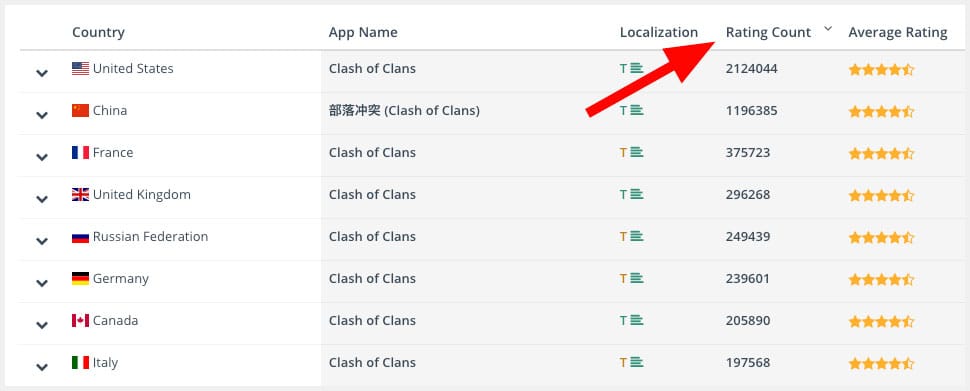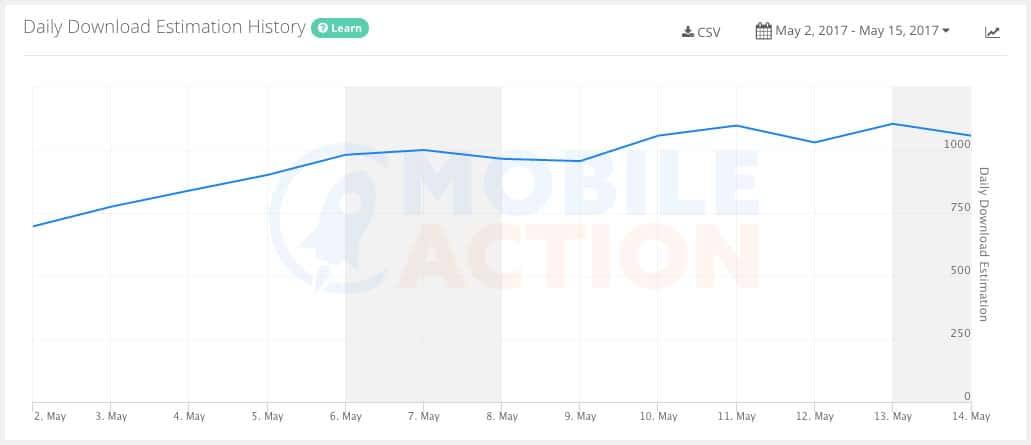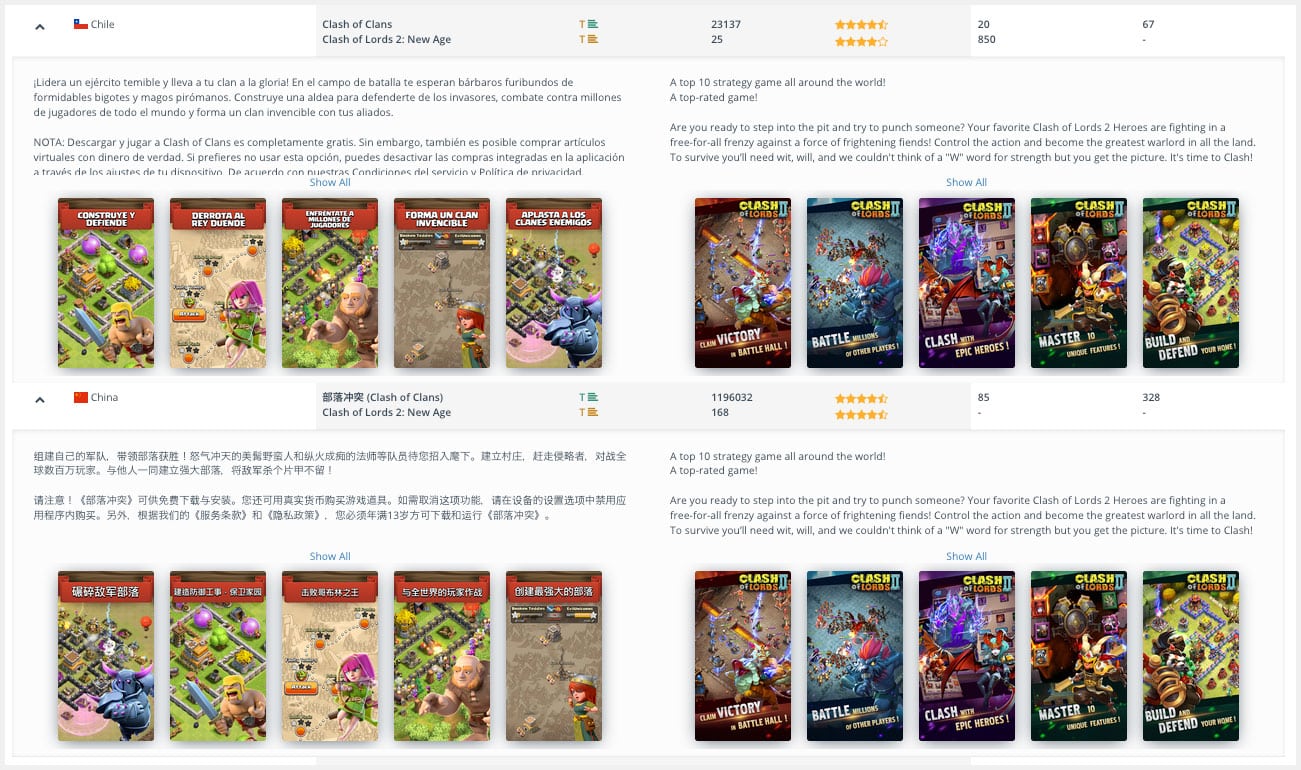You know that app localization can grow your user base very quickly.
We’ve seen growth of 300% or more, when companies target key countries outside of their primary country. But how do you know which countries you should target and the best ways to tweak your ASO strategy in other countries?
After all, what works in the US might not work in Japan or Russia.
In addition, doing a full localization on an app can be an expensive and time consuming process. So you need to have as much information as possible, before you make a decision to move forward.
In this post, we will show you exactly how to get this information.
Find out what is working for other app publishers, before you spend any time or money on localization.
What are the Best Countries to Localize For?
This is the big question, especially if you have never localized before. One way to do this is to take a look at what other apps in your niche are doing.
Using our Localization module inside our Premium ASO Intelligence package is an easy way to get an overview of he localization strategy of any app.
When you select an app to analyze, you will see the following information about every country.
Let’s take a look at each column individually:
- Country: The app store country
- App Name: The name of the app in that country
- Localization: There are two elements that are tracked: app name and app description. App name is represented by the “T” and the app description is represented by the three lines. Both elements can be one of three colors:
- Gray: Not applicable
- Brown: Not localized
- Green: Localized
- Rating Count: Number of all-time ratings for †he app
- Average Rating: Average rating in that country
- Ranking Category: Rank in that country for that category
- Ranking Overall: Overall ranking in that country
To sign up for our Localization module and the other modules in Premium ASO Intelligence, go here.
In order to get the top countries quickly, simply sort by the number of ratings, by clicking on the Rating Count header. Now you know which countries have the most users.
As you examine the country list for every app in your niche, you can easily see which countries the app has been localized for. If enough top apps are localizing for the same countries, then you will have a good idea of which countries may be good targets for localization.
You can double check if their app localization is working by using Market Intelligence to get the estimated number of downloads in each country.
Once you figure out a few countries that you think would be good to target, it’s time to see what strategies are working in these countries.
What are the Localization Best Practices for Specific Countries?
One of the really cool things about our Localization module is that you can also see exactly what an app publisher has localized in each country. You can also save time by comparing two apps at the same time.
Here’s an example when we compared Clash of Clans and Clash of Lords 2: New Age, in Chile and China.
In both examples, Clash of Clans has been localized for the native language, while Clash of Lords has not. Also notice that the app screenshot order is different in each country, for CoC.
This would suggest that they have done screenshot mobile A/B testing and each country had different preferences.
Of course, Supercell has a gazillion dollars, compared to other game companies. So they can afford to localize for all countries and do a lot of split testing.
But in niches that aren’t as flush with money, app publishers are forced to be more selective.
…and that is when you will see some patterns that will help you uncover a solid localization strategy.
Before we wrap things up, it is also useful to consider when the “optimal” thing, isn’t necessarily the best course of action.
Are there countries where the big guys aren’t dominant, where there is a big enough population and you can easily localize? This might help you dominate a smaller market.
Can you still get pretty good results with using English in a certain country, even if that isn’t the official language? You may not need to localize at all to start seeing positive results.
Just a couple of things to think about.
Conclusion
Finally, remember that just because everyone else is using a particular strategy, doesn’t mean that it’s actually working. It could be the case that one company randomly did it one way…and everyone followed.
So take a look at the data inside our Localization module and test things for yourself. Let the results dictate your decisions.
To start using our Localization module, sign up here.








